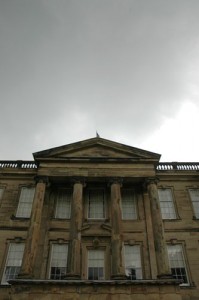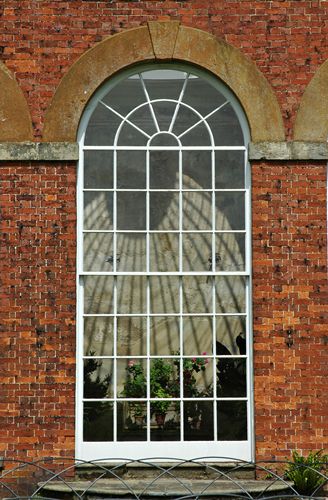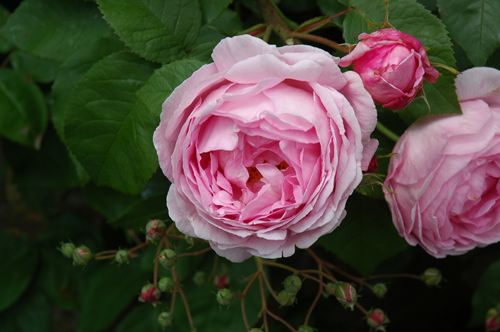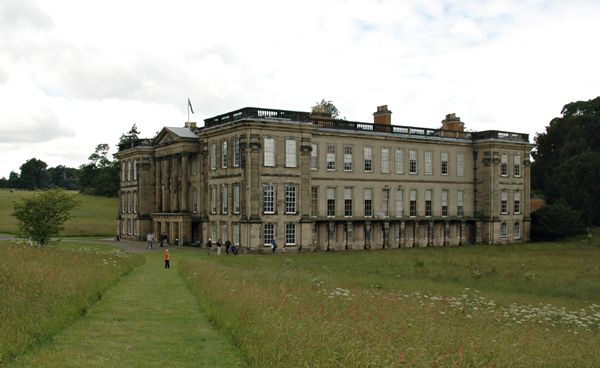
Whenever I visit a stately home I inevitably end up with an emotional summary of my adventure. Sometimes, like at Byron’s Newstead Abbey, I feel strangely elated and happy. Sometimes I feel sad or creeped out. Sometimes, like on Saturday when I visted Calke Abbey, I feel depressed. “Calke Abbey,” as the National Trust brochure reads, “is a Baroque house built on the site of a former priory and completed in 1704 for Sir John Harpur. The family name changed to Crewe and then to Harpur Crewe and the family wealth was accumulated through clever marriage and the proceeds of land ownership. Throughout the generations the family displayed a range of eccentric characteristics from being strangely reclusive to fanatical collectors. The National Trust has decided to show Calke, as far as possible, as we found it in 1984 as a graphic example of the decline of the great country house that occured during the early to mid 20th century.” What the brochure doesn’t mention is that this decline has been heavily influenced by the sucession of crippling inheritance taxes that has brought most of these families financially to their knees and their houses and lands into the Trust’s posession in lieu of taxes they can’t afford to pay. (The trust is a seperate body of government design – call me a cynic but I’m sure that’s no coincidence).
As soon as I stepped inside I felt depressed. The house is actually built around a pre-existing Elizabethan quadrangle house…there are four sides to this house with an open square in the middle. It’s larger then it looks. The entrance hall must have been designed around pre-existing rooms as it’s very pokey. You’d think you’d go in and find yourself in a large spacious hall staring up at a grande staircase, but you don’t. You enter in the large door into a small room that’s to your right. There are several doors on the left, one of the rooms filled with taxidermy and Victorian furniture seemingly crammed in as if there was no where else to put it (the other door we couldn’t go through). If dead stuffed animals are your thing you’d love this house. It’s got dead stuffed things stacked all over the place.
I quickly left the dead stuff and taking the only door on the far right I stepped from the small entry room into a smaller hall. The wooden stair is in the corner as if that was the only place it would fit or maybe this is where the Elizabethan stairs were located. My favorite room was on the ground floor almost opposite the stairs. At some point during the late Georgian period one of the occupants of the house had the room painted a lovely pale greenish blue and cut and carefully pasted Georgian cartoons all over the walls. I wouldn’t be surpried if an aging Georgian died in the room. It’s as if they took the body away, closed the shutters, snuffed out the candles and closed the door leaving it as it was. Up the stairs to the first floor one is directed to the right and through a small “modern” kitchen ( I’d hazzard a guess it was new in the twenties and literally hasn’t changed outside of added electricity in 1964) you go through and you’re soon in the dining room which is one of the few rooms that the owners maintained. It was a room of faded glory. You walk through The Breakfast Room decorated in 1810 and end up in “The Saloon”, the heart of the house. We were filed past rows of old display cases showing shells, fossils, rocks, dead things etc. The only other room inhabitable was what I would have called The Gold Room. In the brouchure its merely called The Drawing Room. It was probably the ladies drawing room. It’s quite compact and like most of the rooms, overly full of furniture. The paper on the wall had a gold leaf pattern that covered all four walls. Real gold…carefully burnished in a large intricate pattern up and down all four walls. It was amazing. I can’t even imagine how long that paper took to make…never mind the cost. It was like something you’d expect to find at Versaille. It didn’t go with the house. I suspect someone with grand ideas decorated that one room and then ran out of money.

From there the house started to show signs of decay…the family lost money…their circumstances declined for various reasons and couldn’t afford to upkeep the entire house so they’d abandon rooms. These abandoned rooms (most of which you’d have to pass through to get somewhere else) were then filled with unwanted junk (like a never ending box room where you throw everything you no longer need) piles and piles of old junk. Every now and then you’d see something that was obviously extremely valuable, but it was surrounded by more furniture (sometimes broken sometimes not) and junk. I find worthless junk quite fascinating. Is there anything so pleasurable as rummaging through good junk? Well maybe, but seeing all these piles of stuff (most of which you couldn’t see for the junk in the way) was even more depressing because no one could appreciate it. Why keep piles, rooms of junk no one can see? What’s the point? There is no point. It felt like an exercise in ownership by The National Trust…”We own this junk…we can show it to you or not as we see fit…because it’s our junk and we own it now!” Even the most trivial junk in that house was valuable because this family saved everything; things very few people saved so its now rare junk! I wish I could have seen the attics when the last owner died!!!! They must have been phenominal. But it wasn’t just junk the family accumilated and stacked in piles, it was very valubable things as well. The one thing that makes this house worth seeing no matter how depressing, is the State Bed. This bed was given by the crown to the couple who rebuilt the house in 1704 as a wedding gift. The bed, which has the most beautiful fabric I have ever seen (dark blue silk embroidered with a treasure chest full of gold thread, peacock feathers and silks) was NEVER taken out of the boxes. When The National Trust found it, it was still wrapped in it’s original tissue paper!!! This giant bed is amazing. As you enter the room to your left is a glass case with some large diamond earings and other small valuable treasures found amongst the junk, but you don’t care about diamonds in the presence of such a bed!
After the bed, the visit became even more depressing as we wandered down into the lower part of the house. The cavernous old kitchen was as it would have been in about 1800. The dirty walls were a cheerful yellow and the only decoration a broken clock nearly the size of a carriage wheele. I felt like I’d stepped into a fairy tale gone wrong. The giant iron stove, the brick bread oven…the open fire where large whole animals were once roasted on a spit turned by the crank overhead were abandoned. It was as if someone had waved a wand and the people had just disapeared, their fallen cooking utensils the only proof that they ever existed. As I finished the tour I couldn’t get out of my head the mental image of all the former inhabitants trapped in other dimensions…layers of depressed inhabitants all lost in their own worlds, passing each other as they wander in search of the unfindable. It’s as if the house was cast under a spell and the spell remains unbroken.






Hi Cari,
I really enjoy your blog and the photos! Australia doesn’t have building that date back centuries (only up to about 200 years) and I love reading about English culture and customs. Thanks for sharing your stories and experiences. Looking forward to your next book…
Thanks! I’m working again on Dancing the Maypole…I’d run into a dead end and was banging my head on a wall, but I deleted and rewrote and think I’ve figured out the direction to take. I’m also working on a short story as well so cross fingers I’ll finish something soon! 🙂
I love old buildings. It’s always surreal to go into a building that’s been standing/used for a thousand years!!! One of these days I’ll get to Egypt and see some of Queen Hatshepsut’s buildings. That will be amazing!!!
The house must have been so wonderful when it was alive with people who love it and appreicated it greatly. I feel sad that it is under a spell that escape it. 🙁
I think you will find that the “entrance hall” as you describe it is small and poky because it originally it was not the entrance hall.In fact the entrance was in what is now a second floor window in the middle of the building with a flight of stairs down towards the sundial on the lawn.
Very good info you have there! Looking forward for ur next post.
Just a follow up on my previous post,I think you may have possibly missed the whole point of Calke Abbey ie it is meant to be a “house in decline” and should be visited with this in mind,it is a wonderful old house and I am sure by the sound of things you may have not seen some of the rooms eg the library for one,also what about the gardens and the rest of the grounds,deer park bluebell woods and more,why not visit again with a more open mind?
@Stan Marston
I knew it was a house in decline. That’s one of the reasons I wanted to see it. I assure you my mind wasn’t remotely closed. I expected and wanted to see lots of old junk. My comments stem from how I experienced the atmosphere in the house. I’m glad I went, but as I commented in my post the house really did feel to me as if it had been cast under a bad spell (and this had nothing to do with the fact it was owned by The National Trust).
And as you can see from some of my photos I did enjoy the gardens. 🙂